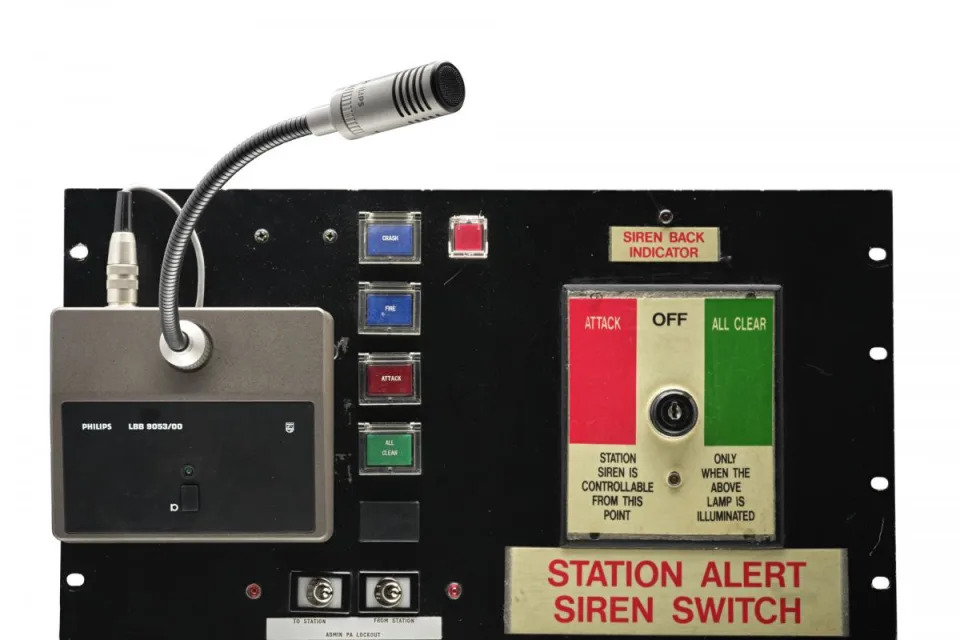Russell Leadbetter
Thu, 4 January 2024

An Air Attack Panel from the Combined Operations Centre, Leuchars (Image: Image copyright National Museums of Scotland)
SCOTLAND’S critical front-line role in the Cold War – and the fears and the protests that it gave rise to – will be the subject of a major exhibition opening in Edinburgh this summer.
Some 190 objects, many on display for the first time, will be brought together by the National Museum of Scotland in ‘Cold War Scotland’, which will narrate the stories of the Scots at the centre of this global conflict.

The Herald: An anti-Polaris demonstration in the Holy Loch, February 1961
An anti-Polaris demonstration in the Holy Loch, February 1961 (Image: Trinity Mirror/Mirrorpix/Alamy)
Atomic power brought jobs and investment to some of the country’s most remote areas, but as global tensions mounted, the threat of attack or nuclear disaster became part of everyday life. The exhibition, which opens on July 13, will “explore the visible and invisible legacies of the war in Scotland”.
'Polaris spells doom': Holy Loch protesters confronted the US navy
It will also reveal the physical remains of the Cold War - the ruined bases, forgotten bunkers and decommissioned nuclear power stations still evident across the Scottish landscape. This infrastructure became part of the fabric of local communities, particularly the US-controlled radar base at Edzell in Angus, now commemorated with its own bespoke tartan.
The exhibition will also look at the sustained CND protests against the controversial arrival in the Holy Loch in 1961 of US nuclear submarines armed with Polaris missiles.
The extent of Scotland’s role in the Cold War has been described by the prominent author and broadcaster Trevor Royle in his book, Facing the Bear: Scotland and the Cold War.
The canoe versus the submarine...the first US vessels arrive at Holy Loch 61 years ago
For much of the period, he writes, Scotland was on the front line, mainly due to its presence on NATO’s ‘northern flank’ – the waters of the north-east Atlantic and the Norwegian and Barents seas with the Greenland-Iceland-UK gap “through which Soviet nuclear-armed submarines and strategic bombers would have attacked in an outbreak of hostilities”.
Adds Royle: “That made Scotland the first major obstacle: it would have been in those northern seas and over Scottish skies that the first battles would have been fought.
“That accounted for the build-up of sophisticated anti-submarine warfare facilities and air defences in Scotland and it was from the American and British bases on the Clyde that the strategic submarines would have launched the response by way of Polaris and Poseidon missiles, each of them capable of destroying Hiroshima several times over”.
The impact of the war lingers in Scottish politics, culture and memory. Scots played an active role in the global conflict as soldiers, for example, within intelligence services and as part of voluntary civil defences.
When Polaris arrived, the key question was still unanswered
The exhibition will also draw on Scotland’s rich history of Cold War-era protest and activism. First-hand accounts include a young mother who decorated her daughter’s pram with CND badges. A rattle made from an old laundry detergent bottle emblazoned with the CND logo was given to her baby during the Peace Marches of the early 1980s and will go on display in the exhibition.
Meredith Greiling, Principal Curator of Technology at National Museums Scotland, said: “From nuclear submarines to lively peace protests and observation stations perpetually monitoring for devastating attack, the Cold War permeated every aspect of life in Scotland for decades.
“This conflict is so often remembered on a global scale, but this thought-provoking exhibition will offer a Scottish perspective of the period, allowing Scots from all walks of life to tell their remarkable stories for the first time.”
Help for Edzell
Further highlights of the exhibition include artwork from Glasgow’s 1951 Exhibition of Industrial Power and a toy nuclear power station, operated by steam and hot to the touch when played with. Both these examples highlight the spirit of optimism, progress and modernity associated with atomic energy in post-war Britain.
In contrast, a Geiger counter used by farmers in East Ayrshire to test for radiation in sheep following the Chernobyl Disaster illustrates the enduring but unseen impact of the Cold War on Scotland’s landscape.

The Herald: A anti-Trident protest rattle made from an old detergent bottle
A anti-Trident protest rattle made from an old detergent bottle (Image: Copyright National Museums of Scotland)
The exhibition is an output of Materialising the Cold War, a collaborative research project between National Museums Scotland and the University of Stirling, and funded by a major grant from the Arts and Humanities Research Council.
Cold War Scotland will be at the National Museum of Scotland, Chambers Street, Edinburgh, from July 13, 2024 to January 26, 2025. Admission free.
No comments:
Post a Comment